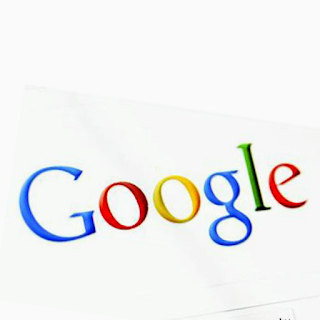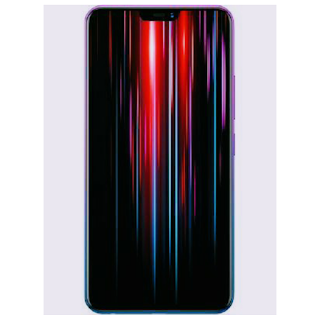HOW TO CREATE A BLOG ON BLOGGER.COM
How to Create a Free Blog on Blogger
Blogger.com is Google's own free blogging site or platform where you can create a free blog with a .blogspot.com subdomain (for example, gadget360mob.blogspot.com) or you have a domain to keep your entire website (Recommended) (for example, www.gadget360mob.com).
Now let's see how you can start your blog with your step-by-step guide below.
Step-by-step guide to starting a free blog on Blogger.com
- Creating a Blogger Account.
- Selecting Blog Name and Theme.
- Optimize your Blogger blog.
- Theme and layout editing.
- Publishing your first content.
- Link blog with AdSense.
1.Creating a Blogger Account
To get started, go to Blogger.com, and you will be greeted with a beautiful landing page that inspires you to create a free blog.
Blogger.com homepage
you can easily create a free blog account by signing in with your favorite Gmail account.
After logging in, you will be asked to use Blogger as your default Google Plus profile or if you want to continue with a limited blogger.com profile.
2.A BLOG NAME AND A THEME SELECTION
In the next screen, you have to choose a domain for your blog.
This is like your physical office address, people will need to reach you at your office.
Choose a short domain name that is relevant to your blog topic.
Choose a short title name.
choose the appropriate theme for your blog.
3.Optimize your Blogger blog
After creating your blog, it's time to optimize it for more search engine visibility and better user experience.
This is a one time process.
You can access it on the side of the left hand panel.
Simply click on the option to read "Settings" and you can customize your blog below:
Blogger settings
Blogger settings
- BASIC
1. Adding an explanation to your blog
Adding an explanation to your blogger blog lets readers and search engines know what your blog is about. You can set it by choosing the basic settings option under the main "Settings panel".
Add Blog Details
Add your blog details
Read this guide on the HubSpot blog to learn how to write an effective meta description.
2. Optimizing your post section of Blogger blog
This section will optimize your homepage and will be doing things in your single post settings.
Optimizing Post Settings.
3. Optimizing your blog for SEO
In this section, you customize your blog for search engines.
Blogger Search Preferences
Blog Search Preferences
Meta Tags: Here you will write a good summary about your blog. It will appear on search engines and readers will be attracted to your blog.
Custom Redirect: If someone links to any of your posts or pages, and you want to delete that page, or link to an incorrect URL that does not exist, then you can use this option on any page All backlinks can be used to redirect. Ideally, this should be your homepage URL.
4.Theme and layout editing
Now, in this section, we will edit the layout of our Blogger Template.
Blogger already has a series of free templates that are basic and simple. But, if you want to go to a different blog template, you can download them from a simple Google search.
However, for this article, we will go with the default Blogger template.
1. Adding a logo
A logo is one that defines and recognizes your brand.
Blogger.com allows you to set a custom logo for your blog.
Since you are starting, you do not need to get expensive logo design. You can create a simple logo by using a free tool like C Anva.
After that, you can go to the Layout Options and select the "edit" link in the header box.
It prompts you to set the logo to different options, select a custom image to upload the upload that you have designed.
Blogger Layout Settings
Blogger Layout Settings
2. Removing Navbar
Navbar is an unpleasant navigation bar at the top of each of your pages that has links to sign out and visit other blogs.
I advise to remove it because it looks ugly and through the next reader, your reader also gets to go to other blogs.
To delete it, click the "Edit" link on the box that reads the navbar and in the next popup window, close it.
3. Adding a Custom Gadget
Gadgets are a small pre-made code snippet that helps you add different functionality to your blog.
You can use those to add anything via the social media buttons, a search option, contact form, visitor statistics, a custom menu, or literally custom HTML.
If you want to add custom gadget to Blogger, when you select the "layout" option, you will find small hyperlinks reading "hyperlink". Clicking on them will open the default Blogger gadget, and you can choose which one to add.
With it, you have set up a professional blog for free at blogger.com. All you have to do is write posts and pages that drive traffic to your blog.
5. Publishing material
If you are confused, then the posts and pages are really similar, except for the fact that pages are usually consistent data which rarely changes or updates.
This means that you can use pages to create your own page, privacy policy and disclaimer page and any other information that is always constant.
remember
On Blogger, you can create unlimited articles (posts) and only 20 pages. Then use your pages wisely.
1. Create a page about us for your blog
Almost the page is probably going to be the most viewed page of your blog because every reader who wants to see who you are, what your mission is and what they can expect from your blog.
It is easy to write your page, you just have to introduce yourself.
After that, you can talk about your blog and what topics can be expected from readers.
If you are providing any services or openings for any business deal, it would be good to mention those people here and link them to separate the pages you would create for them.
In the end, do not forget to add your social channels like Facebook page or profile or Twitter handle so that they can follow you there.
2. Write down your privacy policy and disclaimer page
The Privacy Policy and Disclaimers page add legal explanations about how your site uses your visitor data and which factors you are responsible for and what does not.
These are important pages that you must make before publicly launching or before applying for any monetization programs such as AdSense.
Now, there is nothing to fear. These pages can be easily created or created without any technical knowledge.
how to create your privacy policy click here.
how to create terms and condition click here
create a contact us page
this page is important to you if you are creating a Adsens.
how to create a contact us page
3. Write your first post
Now it's time to write posts or articles that you want to read to people on your blog.
These can be topics that have your expertise or keywords that you want to rank when searching on Google.
To write a post, go to your Blogger Dashboard and choose the "New Post" option.
Write a post on blogger
Write your first post
You will then be able to go to an editor where you can write your blog post, give it a title, add images, and add hyperlinks to other posts and pages on your blog or reference articles on the web.
The editing concept is similar to a MS Word or Google Doc, so it will not be difficult for you.
However, here are some tips for optimizing your blogspot articles for better SEO and ranking.
I suggest writing at least 25 posts before publicly launching your blog or sharing it with friends.
By keeping a good number of blog posts, your visitors will know what your blog will be like and what can be expected from it.
6. Monetizing your blog with Google AdSense
When you have at least a good blog post and a good number of good readers, you can definitely use Google AdSense to earn money from your blogspot blog.You can easily apply for AdSense through your Blogger Dashboard and get approval.
To apply for AdSense through BlogSpot.com, go to your dashboard, click on "Earnings" and click Apply for AdSense.
Note:before apply buy a good domain.
Monetize your blog with AdSense
However, when you have all the necessary pages and some posts, you can successfully get the approval.












Comments
Post a Comment